GL Enhances Protocol Simulation and Conformance Test Tool
Welcome to another March 2017 issue of GL Communications' Newsletter providing information and insight into our enhanced Message Automation and Protocol Simulation (MAPS™) platform with Remote MAPS™ Controller , a single-client application for Multi-node Multi-interface simulation capability.
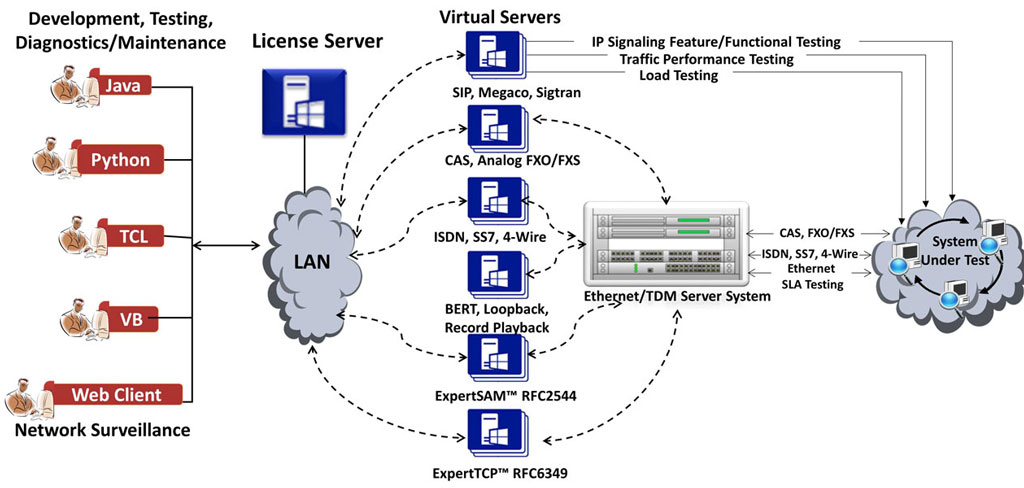
Overview
The Remote MAPS™ feature is a client server module, designed for multi-node multi-interface simulation from a single remote GUI. This single remote client application can remotely control multiple MAPS™ Servers running on different PCs. The Remote MAPS™ application communicates with the multiple MAPS™ (Servers via ) Listener over TCP/IP.
One or more MAPS™ applications can be installed on each sever. Practically all nodes (network elements) associated with a protocol, including protocol standards and profiles can be remotely configured from a single client GUI.
Important Features
- A single Remote Client GUI to remotely control/monitor all the network interfaces and elements simulated by MAPS™ Servers; one or more MAPS™ applications can be installed in a single Sever
- Allows integrated testing of different networks - Wireless, IP, TDM, and Analog (CAS, FXO, SIP, IMS, UMTS, ... )
- Supports testing of core networks, access networks, and interworking functions
- Remote MAPS™ provides access to all the functions of MAPS™ such as Test-bed, Call generation, Call reception, Statistics and Results
- Client-server communication is facilitated through a Listener over TCP/IP
- Each Listener equates an independent instance of MAPS™ application at the server side. Each listener is associated with an Admin user
- Unlimited number of Remote client users can be defined at the server
- Remote Client invoked by “Admin” user has privileges to start /stop Test-bed setup access. Remote Client invoked by “Remote Users” has privileges to certain set of subscriber profiles, using which he can edit scripts, profiles, messages, perform call simulation, and view test results
- Single Licensing Server option available for controlling number of MAPS™ Server licenses as well as client licenses (no of users)
- Simultaneous traffic generation/reception at 100% on all servers
Functional Capabilities
Remote MAPS™ for IMS Network
In this example, we use Remote MAPS™ to simulate multiple nodes in IMS network such as UE, P-CSCF, S-CSCF, I-CSCF, and HSS situated at remote locations. The client application connects to these servers, starts test-bed, and remotely accesses the MAPS™ functionalities to perform VoLTE call simulation between 2 mobile subscribers.
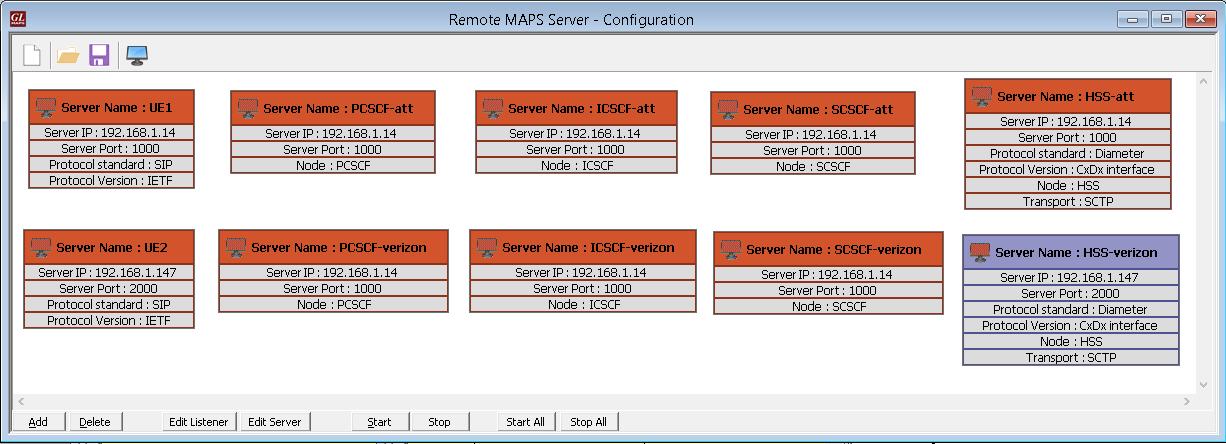
Remote MAPS™ Server Configuration for IMS
The network representation of this scenario is shown in the figure below. It illustrates a call simulation from Non-Roaming User to another Non-Roaming User across different LTE – IMS Network (UE1 in ATT network to UE2 in Verizon network).
Remote MAPS™ can simulate User Equipment 1 (UE1) registered at ATT network to place a call to User Equipment 2(UE2) registered at Verizon network. Once the preconditions are met and resource reservations are made, call will be established between the users.
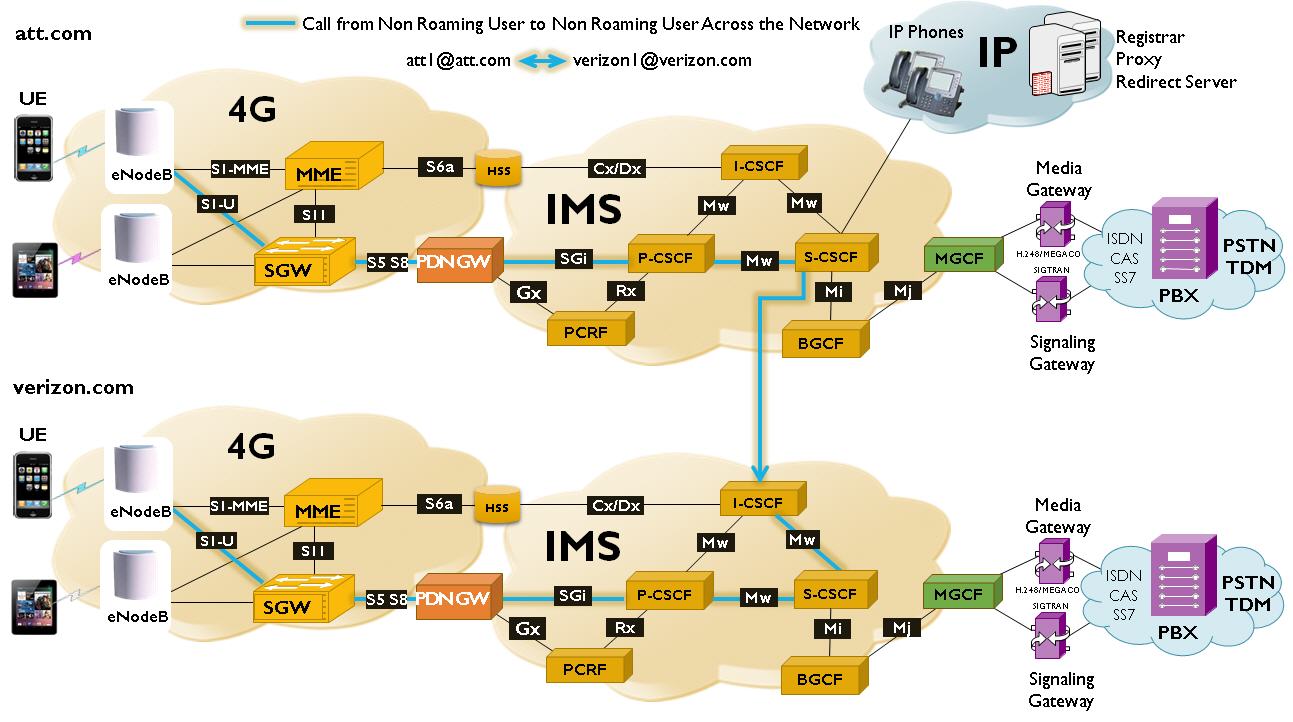
End-to-end Call from Non-Roaming User to Non-Roaming User across the Network
The below screenshots show the Registration flow at S-CSCF which handles SIP Registrations for ATT Network interacting with I-CSCF and HSS and call flow at I-CSCF interacting with S-CSCF of ATT network and HSS and S-CSCF of Verizon network.
Remote MAPS™ for TDM Network
In this example, we use Remote MAPS™ to show how multiple users share the channel resources on a single MAPS™ T1 E1 Server to simulate calls. On the MAPS™ server system, Octal T1 E1 Analyzer is installed and 2 listeners are started with different port number 4000 and 6000 respectively. Admin 1 - User 1, Admin 2-User 2 are also created on the server system. Each listener is associated with an Admin user. Consider Card# 1 is connected in loopback to Card# 2. Similarly, Card# 3 is connected in loopback to Card# 4.
MAPS™ Remote Client may be installed on any PC except the Octal T1 E1 Analyzer system. With this setup, Admin-1 can start test-bed setup on Card# 1-3, and Admin-2 can start test-bed setup on Card# 2-4. Once the test-bed setup is started User 1 registers subscriber profiles on Card# 1-3-5-7, and User 1 registers subscriber profiles on Card# 2-4-6-8.
Now, ISUP calls can be placed and received between User 1 (ex: Card#1 TS00) and User 2 (ex: Card#2 TS00).
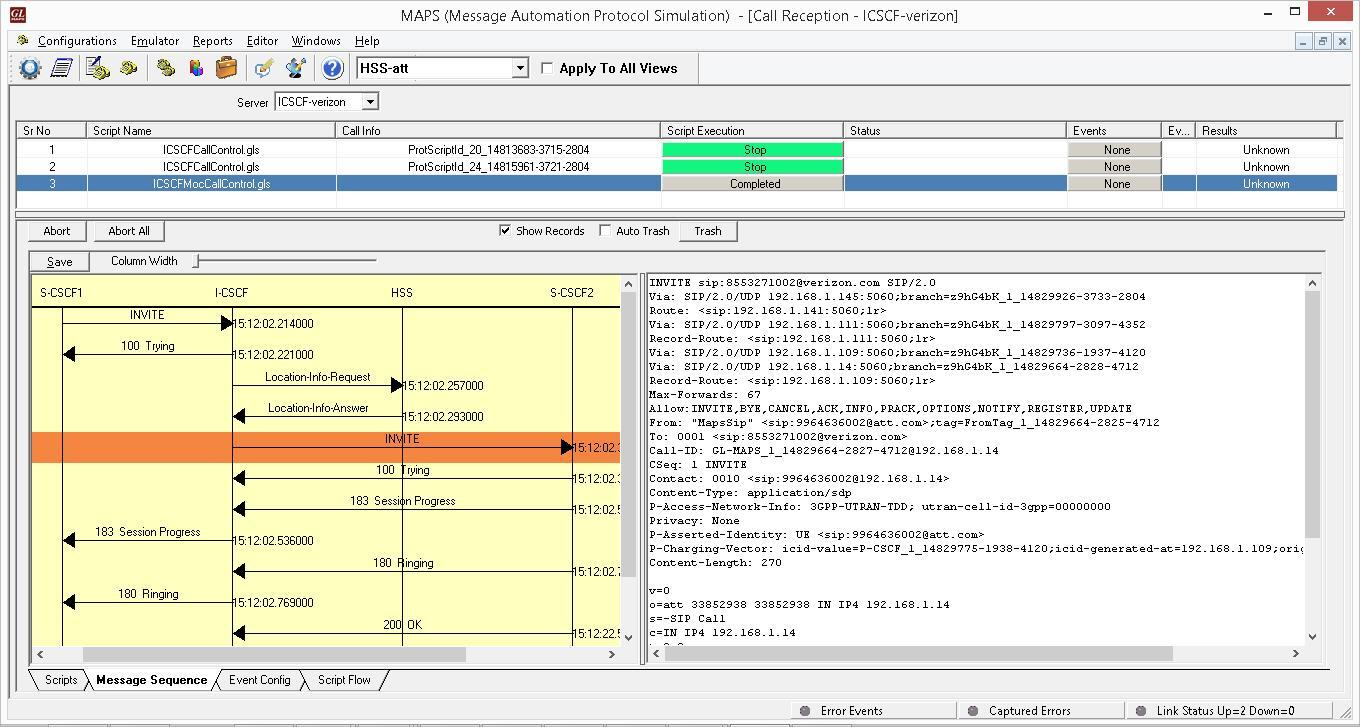
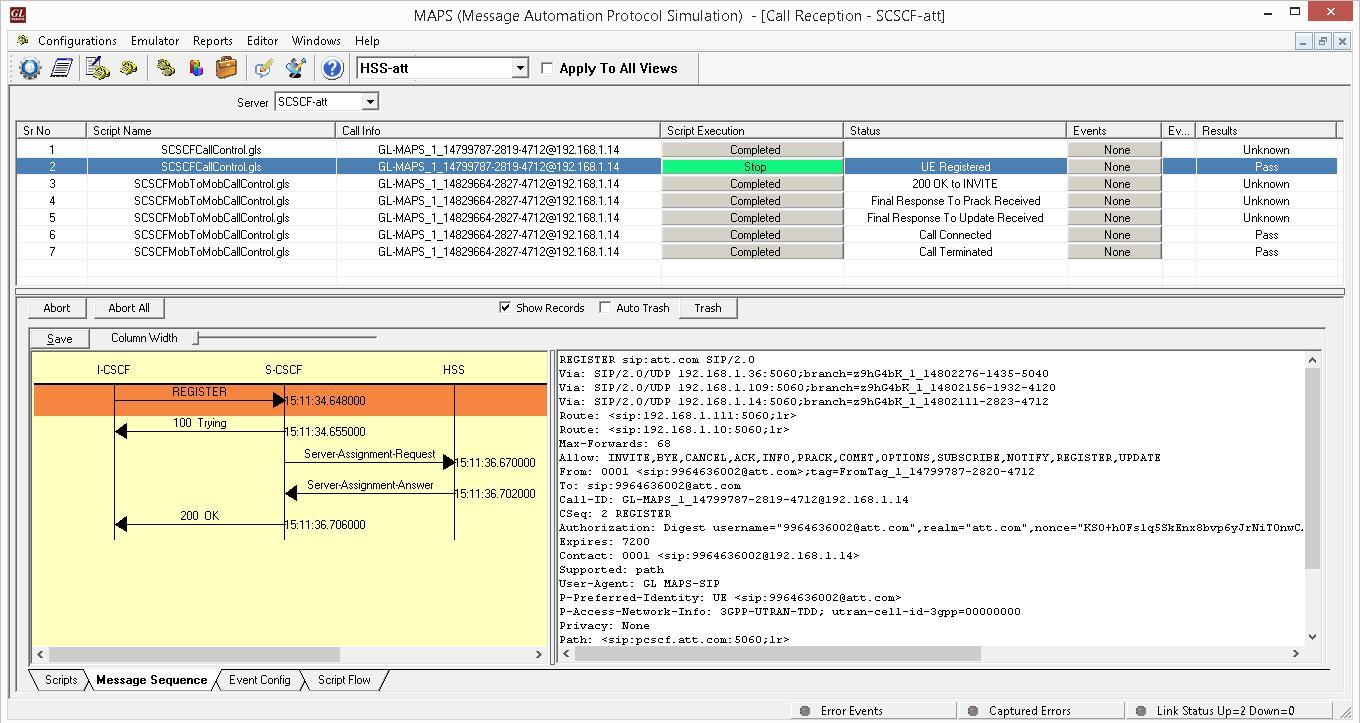
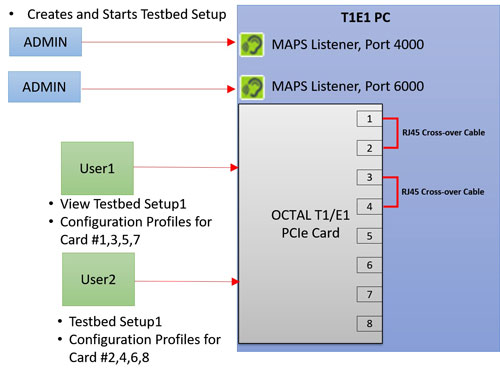
 Back to Newsletter Index Page
Back to Newsletter Index Page